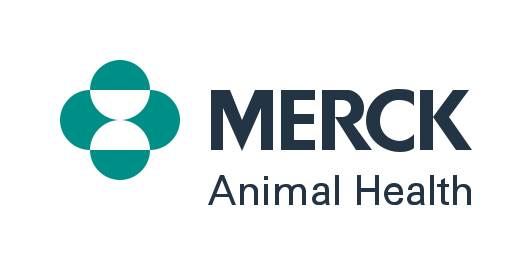Consumer Transparency &
Traceability Preferences

CONSUMERS CRAVE more high-quality protein…
97%
of U.S. adults choose to eat meat or seafood at least once a week1
at least 1 in 3
increased their interest in eating meat or seafood as a source of high-quality protein in the past year
… AND THEY ARE HUNGRY FOR MORE
TRANSPARENCY AND TRACEABILITY
Nearly 2 in 3 consumers believe more transparency around animal protein is needed and would make them feel more comfortable consuming it – particularly meat and seafood.
More than half of consumers find additional transparency information extremely or very valuable.
Claims consumers find most valuable
67%
U.S. raised, locally grown meat or seafood is a valuable claim for 67% of consumers
64%
“Free-from” claims (hormone-free, antibiotic-free, etc.) are valuable to 64% of consumers
63%
Animal welfare standards or care claims are valuable to 63% of consumers
60%
Environmental and sustainability claims are valuable to 60% of consumers
51%
Just over half of consumers – 51% – value animal breed claims (Black Angus, Duroc Pork, etc.)
Younger adults value animal welfare and environmental claims most.
Interest in traceability is growing
In the past year, more than 40% of consumers report increased interest in traceability technologies – and a desire for more information or verification.
Increased Consumer Interest
More information about meat and seafood through traceability technologies
44%
How meat and seafood was raised, handled and transported
40%
Knowing the meat or seafood was sustainably raised
40%
Seeing transparency claims on meat or seafood products
39%
Knowing product label claims were verified by a third party
36%

CONSUMERS ARE READY TO PAY MORE FOR transparent, traceable meat and seafood
Nearly 40% of consumers are willing to pay $0.10 to $1.00/pound more for transparency/traceability claims on the label
Younger adults (18-34) are the most willing to pay more, and women are more willing than men.
Gender and Generation Differences
TRANSPARENCY IS VERY IMPORTANT TO WOMEN AND YOUNGER ADULTS
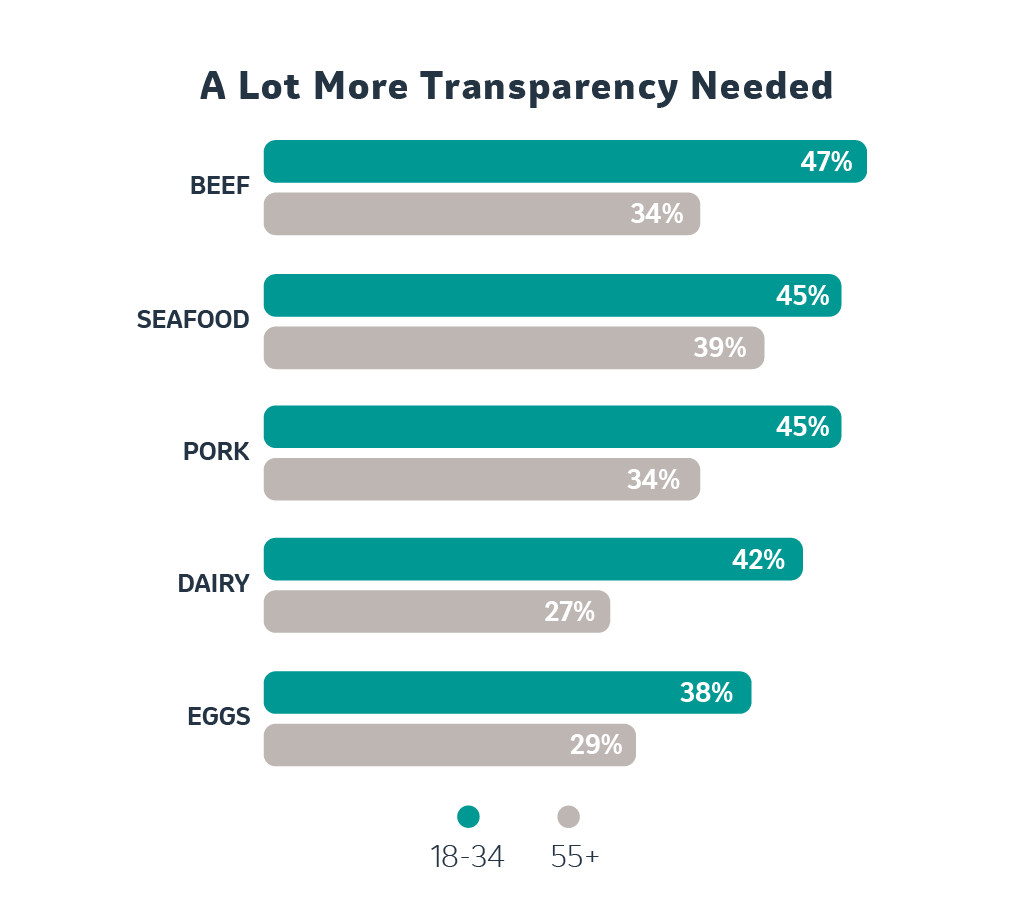
Younger adults (18-34 years old) want significantly more transparency compared to older adults (55+ years old).
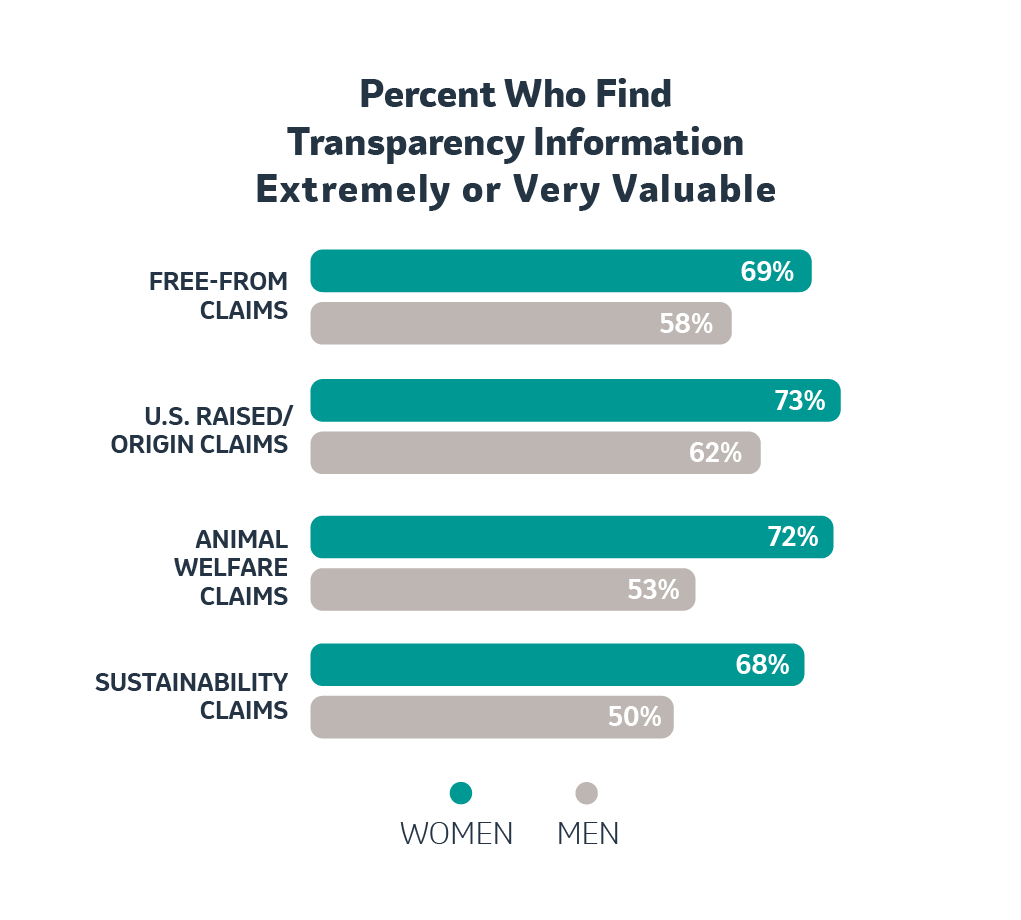
Women value all transparency claims more than men by as much as 19%.
Greater transparency + traceability offers an opportunity to build more consumer trust
On average, 67% of consumers say they have “a lot” or “some” trust in how meat and seafood products are raised, grown or made.
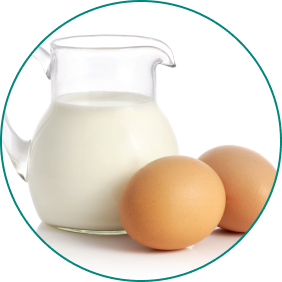
75%
Trust is highest for dairy and eggs with 75% of consumers trusting these protein sources
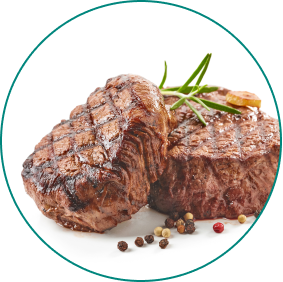
69%
Beef has high consumer trust at 69%
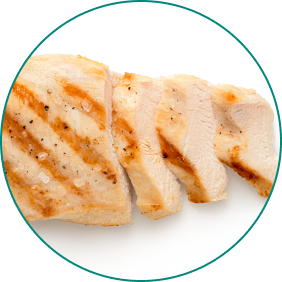
66%
Poultry also has high consumer trust at 66%
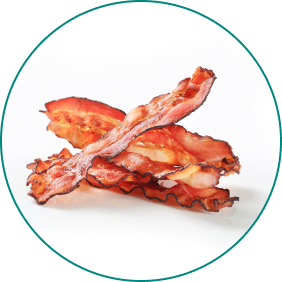
61%
Pork is trusted by more than 6 in 10 consumers

58%
Seafood is trusted by more than half of consumers at 58%
Transparency + Traceability = Trust
Consumer Transparency & Traceability Preferences
The infographic data are the results of a Merck Animal Health consumer transparency research study, conducted by Fountainhead Brand Strategy, with 975 consumers who represent the U.S. adult census and have eaten meat, fish, eggs, or dairy in the last week. The March 2024 study defined transparency as knowing how food is grown, raised, or made. Traceability was defined as being able to follow the movement of food products and ingredients through the supply chain.
References
1Merck Animal Health, Research on file, 2024: U.S. Consumer Transparency and Traceability Omnibus Research Report.
